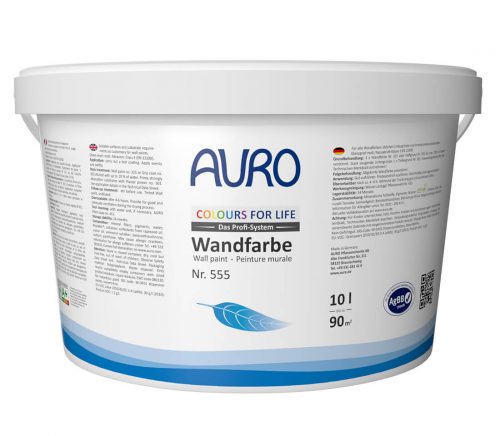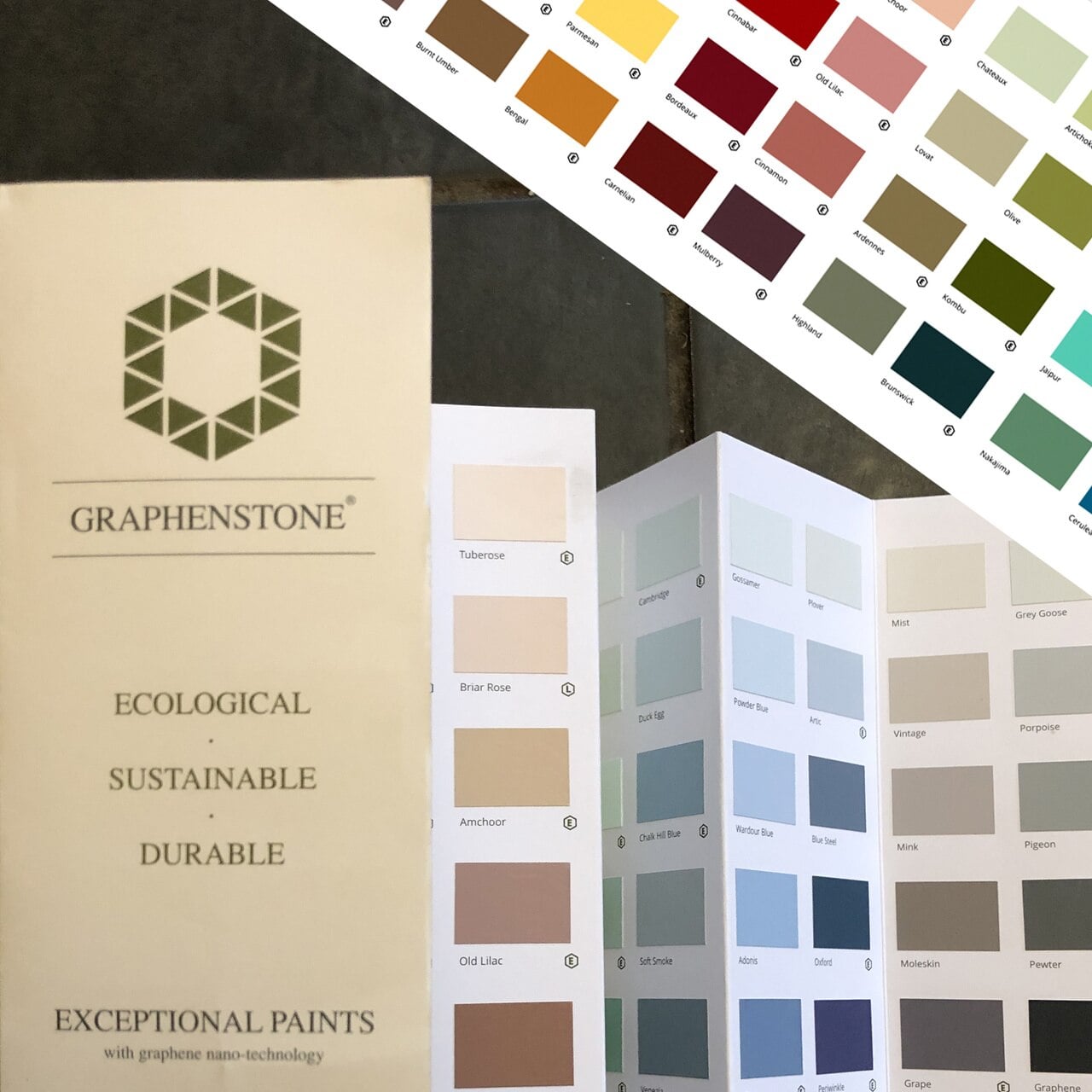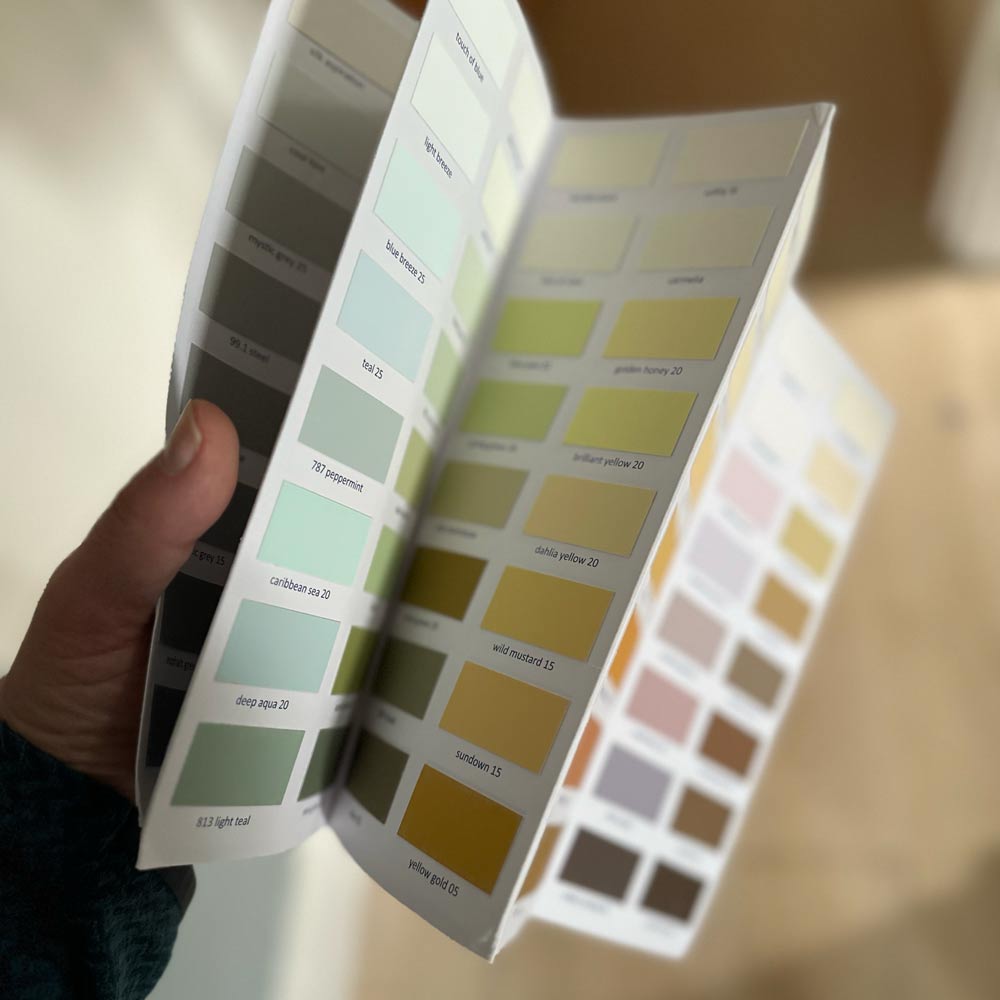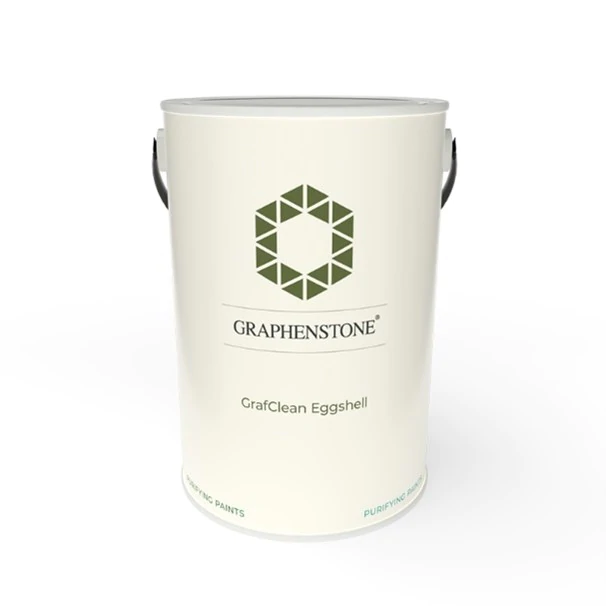Common Bathroom paint questions!
What is the best paint to use in a bathroom?
I suggest that you use the Graphenstone Grafclean Premium, as it is tough and scrubable!
Do bathrooms need special paint?
I would advise using a normal emulsion as they are not the best in moist and damp environments. No paint is perfect for the inside of shower etc, you’re better off using tiles, but for the rest of the bathroom I suggest using the Grafclean Premium.
Do I need special paint for bathroom ceiling?
Same as above really, you need something that is going to have good adhesion and able to be wiped.
How do I prepare my bathroom walls for painting?
I suggest that you clean, then when dry sand back to key the surface. Ideally you would apply a primer payer to even out the surface, but thinning a coat of top coat 10% will also do a good job if the surface is already great.
Should I sand my bathroom walls before painting?
We always recommend that you at least lightly sand the surface, which is called a ‘key’. This will enable the new coat of paint to stick much better!
Do i need to prime bathroom walls before painting?
Not always, no, but there is no doubt that priming means that you’re more likely to get a better and more uniform topcoat. It’s more expensive to prime, but conversely your paint may stick to your walls many years longer!
Can you use kitchen paint in a bathroom?
Yes, you can use our Grafclean Premium in both the kitchen and the bathroom.
Is matt paint ok in bathroom?
Yes, sure, but it will just pick up a bit more dirt than a satin. Personally I still love a matte paint in the bathroom and that’s what I have!
Can i paint over bathroom paint?
Yes, if the paint is shiny then I suggest giving it a key sand, then primer, then topcoat for best adhesion.
Is kitchen and bathroom paint the same?
We would suggest that it is fine to use the Grafclean Premium in both your kitchen and your bathroom paint job.
Natural Bathroom Paint
Is Bathroom Paint a Special Type of Paint?
You may have heard the term “Bathroom Paint” being mentioned if you have been in search of the right paint for your bathroom design when looking at bathroom inspiration. You might think that it is different from ordinary household interior paint and designed specifically for bathrooms. A
s a matter of fact, the so-called specially formulated “Bathroom Paint” is not all that different from standard paints. You can even use interior paints with higher sheen values that perform well in the moist environments of bathrooms. Yet there's one good reason why you might want to buy bathroom paint: more options for paint sheen. You'll be able to find a beautiful natural emulsion paint for your bathroom and kitchen, without needing a high gloss paint.
Low VOC bathroom paint.
If you are looking for low VOC bathroom paint, look at either the Grafclean or the Grafclean Eggshell natural emulsion paints.
Qualities to Look for in bathroom paints
If you are wondering what qualities a bathroom paint should possess, the following properties should be considered as differentiating factors between different paints:
- Free from VOCs and harmful toxins – Any Graphenstone would be perfect here.
- Mould Resistance: The wet environment of the bathroom provides the optimum environment for undesirable mould and mildew growth. Higher PH paints can give you an advantage of being mildew resistant.
- High Durability and Wash-ability: Bathroom walls frequently get wet and often need scrubbing. A paint that can withstand repeated scrubbings and cleaning the walls should be a priority
- Ease of application. We advise using a brush or roller for beautiful bathrooms.
The Challenge of Painting Bathrooms & bathroom interior design.
Bathrooms are regions of the house that have the highest moisture. Sinks, drains, showers, and baths all contribute to this, leaving the walls wet more often than not. Moisture can damage paint when it penetrates the paint layer and contacts the drywall or plaster surface underneath.
This can lead to peeling paint and mould growth. The less permeable the paint coating, the less moisture gets through. However, you can still use a breathable paint – but we suggest not using these paints directly in line with water, IE a shower wall! We would always suggest using tiles around the shower and sinks.
How Paints Resist Moisture
The main factor that influences moisture resistance is the glossiness or sheen of the paint. Paints on the higher end of the glossiness spectrum repel moisture the best and are easy to scrub and wash. However, depending upon the structure and design of the paint, even lower sheen values can provide adequate moisture resistance and steam resistance whilst simultaneously conforming to your aesthetic choice. The following provides a brief summary of the different types of paint finishes that are available to the prospective home-owner.
- Flat: Also called Matte. Less easy to clean, and water doesn’t flow off very well.
- Eggshell: Slightly more sheen than flat, however, does not hold up in extremely damp environments
- Satin Mid sheen: More glossy than eggshell and can be used in low moisture bathrooms
If bathroom-focused paints are used, one can choose any of the above finishes without fear of wearing out the paint.
Tips for Painting Bathrooms
Before applying the paint, clean the bathroom walls, and remove any existing mildew with an appropriate cleaning agent. Use painter’s tape to block off your corners, doorways, floorboards, and any other spots you don’t want to paint, and make liberal use of drop cloths or plastic sheeting to protect the floor, countertops, and toilet. Cut in the corners using a brush, before using a roller to paint the central parts of the wall. Wait for the paint to dry before adding further layers.
Choosing a Paint Colour
Choosing a bathroom paint colour is mostly influenced by the impact the colour makes on reflections. Thus, one should choose a neutral colour, such as whites, greys, creams, and pastels.
The Bathroom of your Dreams – Do it this weekend!
Giving your bathroom a makeover may not be as difficult or expensive as you fear! Nothing brightens and rejuvenates a space like a fresh coat of paint. The best part? Bathrooms are small so this is an easy weekend project that will yield immediate, stunning results!
Bathrooms are often going to be humid and prone to mould, so choose wisely when deciding on paint and consider using a natural anti-mould system that will kill existing mould before you begin and that comes with a VOC free mould-inhibiting organic paint that will keep it from growing back.
First, take down all decorations and wall hangings including towel bars, cabinet knobs and electrical outlet covers. Use painter’s tape to protect trim, and use drop cloths to protect floors, sink, tub and toilet. Before painting, make sure to use a quality primer that is appropriate for most surfaces. That way you can use it throughout your bathroom without changing cans, brushes, etc. Use it to prep walls, cabinets and trim so you’ll have a solid, blemish-free base to paint over.
Once you’re ready to start adding the fresh paint, start with the ceiling. A matte emulsion natural resin wall and ceiling paint is ideal. Start by brush painting the perimeter and then fill in the middle with a paint roller. Once the ceiling is dry, it’s safe to begin on the walls. Begin in a corner and work your way either clockwise or counterclockwise around the room. For best results, paint with up and down strokes as opposed to horizontal ones.
Wait the recommended amount of drying time—we know you’re excited, but you’ll get much better results if you can be patient! Once dry, it’s safe to reattach your hardware and hang your decorations. Roll up those drop cloths and give the floor a good cleaning. Maybe splurge on a new set of complementary coloured towels or a new shower curtain to really get a new feel in your space. The challenge now will be waiting in line to use your newly painted bathroom as the rest of the family takes their time enjoying it!






